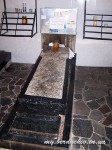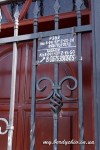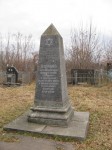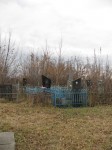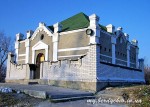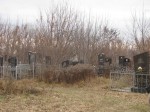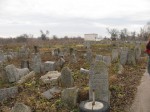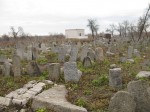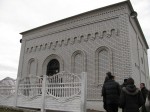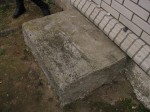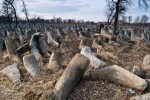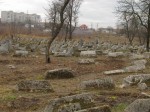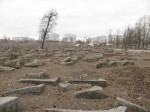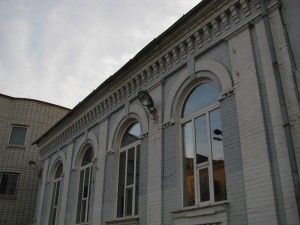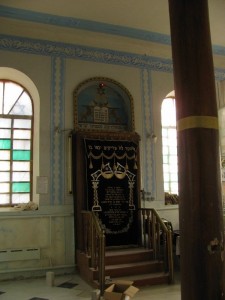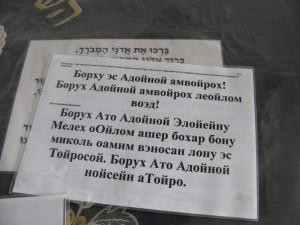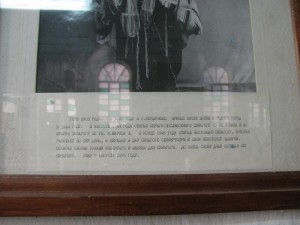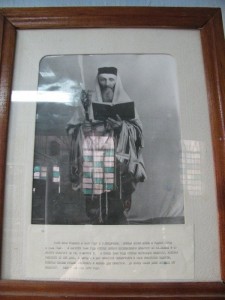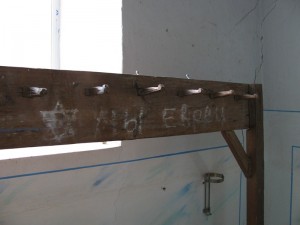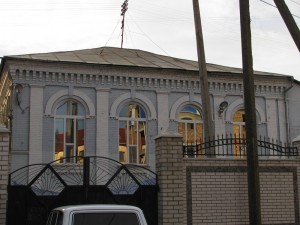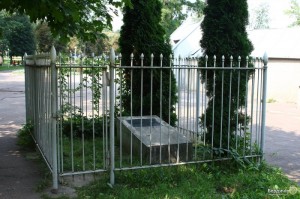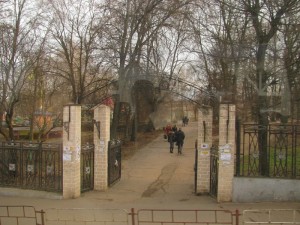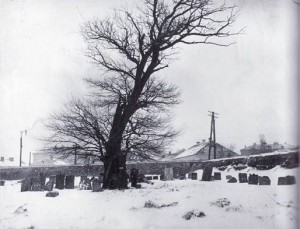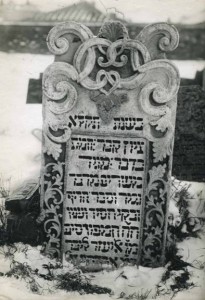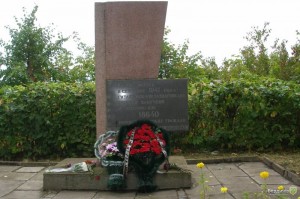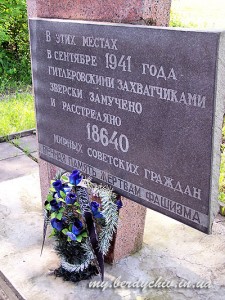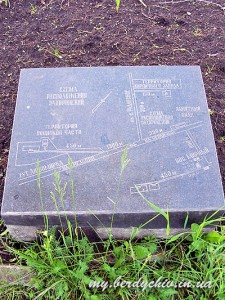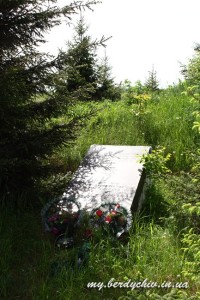Berdichev (historical report)
Courtesy: History of the Jewish Communities in Ukraine
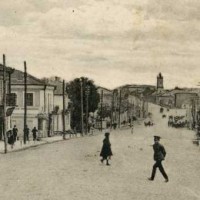
Barditchev (Yiddish), Berdicev (Romanian), Berditchev, Berditchov, Berditschew, Berdytschiw, Berdyczów (Polish), Бердичев – Berdichev (Russian), Бердичів (Ukrainian)
Berdychiv is a historic city in the Zhytomyr Oblast.
How it all began
Jews were first mentioned in Berdichev in 1593. Towards the mid-eighteenth century, the city became one of the main Jewish centers of Ukraine, earning the esteemed title “Jerusalem of Volhynia.”
From 1785, Berdichev was home to Rabbi Levi Yitzhak of Berdichev, a prominent Hassidic leader, as well as Rabbi Yitzhak Ber Levinzon, a famous advocate of Jewish Enlightenment.
In 1797, prince Radziwill granted seven Jewish cloth merchants the monopoly of the cloth trade in Berdichev. In 1798, a Jewish printing press was established in the city, one of the greatest in Russia.
The ideas of enlightenment (Haskalah) began to spread in Berdichev early in the 19th century, especially among the wealthier families. The Galician Haskalah pioneer and Hebrew author Tobias Feder Gutmann settled in Berdichev toward the end of his life. Influenced by Isaac Baer Levinsohn, a group of Maskilim was formed there in the 1820’s, in which the physician Israel Rothenberg was to be particularly active. Among the opponents of the Maskilim was the banker Jacob Joseph Halpern, who had great influence in Hasidic circles and was close to the government. With the economic decline of Berdichev, the wealthier Maskilim left for the larger cities.
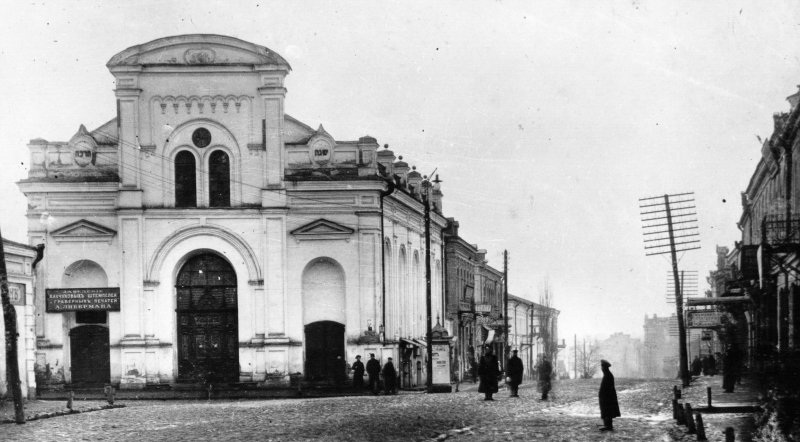
Big Сhoral Synagogue. Pre revolution photo
The first public school in Berdichev with instruction in Russian was opened in 1850. Because of the poverty of the majority of the Jewish population a large number of children were even unable to attend Heder. According to the 1897 census, only 58% of Jewish males and 32% of Jewish females were able to read or write any language. Sometimes a cold statistical summary gives a better idea of national and social character of a city than a relatively bright and artistically satisfying one.

1775 — 788
1860 — 50,399 (92,6%)
1897 — 41,617 (80%)
1910 — 57,209 (77%)
1926 — 30,812 (55,6%)
1939 — 23,266 Jews
1959 ~ 6,300 (11,8%)
1979 — 4,637 (5,8%)
1989 — 3,512 Jews
2011 less than 1,000 Jews
In the first half of the 19th century the town’s commerce was concentrated in the Jewish hands. Jews founded scores of trading companies and banking establishments there, with agencies in the Russian interior and even abroad. Jews also served as agents of the neighboring estates of the nobility, whose agricultural produce was sold at the Berdichev fairs. The expatriation of Polish nobles and decline of the Polish nobility after the uprising of 1863 dealt a blow to Jewish commerce in Berdichev. The economic position of most of the Berdichev Jews was further impaired by the restrictions imposed on Jewish settlement in the villages by the “temporary regulations” (May Laws) of 1882 and other government restrictive measures.
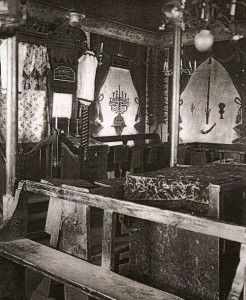
Inside one of the Berdichev’s synagogue. Beginning of XX century. |
At the end of the 19th century, about half of the Jewish wage earners were employed in manual trades, mostly in tailoring, shoemaking, carpentry, metalwork, etc. About 2,000 were hired workers, while the remainder gained their livelihood from trade. Berdichev became one of the foremost centers of the Bund.
A prominent Yiddish and Hebrew writer, Sholem Yankev Abramovitsh (Mendele Mokher Seforim), worked there in 1897.
According to the population census of 1897, there were 53,728 Jews in Berdichev, but the numbers were “growing rapidly”. On 1 January 1899, 50,460 of the 62,283 total population were Jewish, there were 7 synagogues and 62 Jewish houses of worship, compared with 10 Russian Orthodox churches and one Roman Catholic church. According to the author of the passage, the number of primary schools jedarim-Jewish-in the city was so great that it “was not even recorded.” There were 78 synagogues in 1907 and 67 in 1910.
The business directory of 1903 lists many names of Jewish entrepreneurs in Berdichev (in Russian):
As part of the 1913 ethnographic expedition, Semen An-skiy visited Berdichev and recorded a number of Jewish stories and made some photos. Here you can find some of this material in Russian here.
The business directory of 1913 lists many names of Jewish entrepreneurs in Berdichev (in Russian):
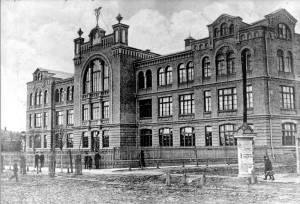
Jewish School of Commerce. Beginning of XX century. |
During the Russian Civil War (1918-1920), dozens of Jews were killed or wounded in pogroms carried out by the Ukrainian nationalist forces of Hetman Skoropadsky and Petlyura. During the 1917 revolution and the civil war of 1917–19 a Bundist leader D. Lipets was the head of the community and the town mayor. After the revolt of October 1917, Berdichev was inundated with Yevsektsiya activists, the Jewish section of the Communist Party, who arrested and disarmed the Zionists, a Jewish self-defense group formed on the eve of the Petliura pogroms in the early 1919. But when they defeated the followers of Petliura, and later, in June 1920, expelled the Polish troops from Berdichev, a new pogrom, this time instigated by the Bolsheviks befell the inhabitants of the city.
After Civil War
As a result of the civil war and the Red Terror, there were only about thirteen thousand Jews living in Berdichev, according to the census of 1926, i.e., twenty thousand less than in 1899.

Members of the HeHaluts movement in an agricultural pioneering training farm (hachshara) in Berdichev.
This photo was taken from a book called “Fighting for freedom” which was published in Israel in 1950s. On the photo: 1 – Butya Froysburd; 2 – Rose Yaroshevskii; 3 – Batya Spiegel; 4 – Tanya Breen; 5 – Tanya Obidyanik; 6 – Keizer; 7 – Tova Handelsman-Burger; 8 – Inna Mintsker; 9 – Rose Dorfman; 10 – Ms. Foxman; 11 – Elkana Bilik; 12 – Yahezkel Friedman; 13 – ?; 14 – Sarah Bilik; 15 – Mrs. Zuckerman; 16 – ?; 17 – Frum Labovskii; 18 – Ephraim Dorfman (Artsieli);; 19 – Michael Chumash; 20 – Joseph Vaest; 21 – Yahizkiel Marder; 22 – Yehuda Yaroshevski; 23 – Ms. Feldmann; 24 – Zeev Melamed; 25 – ?; 26 – Monya Muchnik; 27 – Zemelmann; 28 – Frum Dryazhner-Fritsker; 29 – Yahushua Haznyuk; 30 – Yitzchak Yudkis; 31 – Moshe Bronstein; 32 – ?; 33 – Asher Kopyta; 34 – Abraham Shapira; 35 – Baruch Mintsker; 36 – Shalom Ladar; 37 – horticulture instructor; 38 – mashavets; 39 – Joseph Pihman\Fihman
Rabbi Shmuel Vaintrob was a head of community till the beginning of 1920th. In 1924, a government court of law was established there, the first in the Ukraine to conduct its affairs in Yiddish. According to the 1926 census, of the 30,812 Jews in Berdichev 28,584 declared Yiddish as their mother tongue.
The authorities could not ignore this and decided to use the language for communist re-education of the Jews “left” of the former Land Settlement. However, there was strong resistance in Yevsektsiya policy Volhinia, and even the Jewish newspaper the Moscow Emes (Truth) was forced to admit that the workers in Zhitomir province refused to attend classes on Shabbat, as a result of which the whole process of instruction in schools for Jewish workers was close to collapse. Trying to gain the sympathy of the Jewish population, to start with the Soviet regime tried to uphold the principle of equal rights for different peoples and languages they spoke.
In 1924, the first Ukrainian court of law with proceedings in Yiddish was established in the city, and later the police also worked in Yiddish. In 1928, a Historical and Cultural Reserve (a museum) was opened in the former monastery of the Discalced (Barefooted) Carmelites, where a great part of the exhibition dealt with Yiddish culture.
Until the mid-1930s, several Jewish schools were open in Berdichev, and the newspaper Der Arbeiter (The Worker)continued to be published 10 times per month. However, on the eve of World War II and in particular, once the Molotov-Ribbentrop Pact was signed, the Jewish cultural and educational activities in the city were reduced significantly.

Title page Pinkas (record books) Berdichev Kahal. Photo of An-skiy expedition. |
The only center for national and religious life among Jews in Berdichev in the pre-war years was an illegal Chabad Chassidim yeshiva under the leadership of a young rabbi E. Pinsky (1914-1942). Under the Soviet government, most synagogues were closed.
By the end of the 1920s-1930s, the Jewish population of the city had significantly decreased, due to a mass migration that had begun in the early twentieth century: the 1939 census revealed that only 23,266 Jews remained in Berdichev, comprising 37.5 percent of the total population.
Holocaust
On July 7, 1941, the Germans occupied Berdichev. About one third of the city’s Jewish population, including refugees from Poland who had arrived there during the first month of World War II, managed to evacuate or escape.
The first days of the occupation witnessed wanton Jewish murders perpetrated by German soldiers. By August 22, 1941, a ghetto was established in Berdichev, in the Yatki area. From August 1941 to June 1942, the Jewish population of Berdichev was annihilated in a number of murder operations.
In a separate operation on April 27, 1942, some seventy Jewish women from mixed families were shot together with their children.

Last letter of Yacob Perelmutter from Berdichev. Yacob was murdered together with his wife Rebecca Fridman and other 20.000 Berdiched Jews.
During every murder operation, the Germans separated Jewish “specialists” needed for labor. Thus, after the mass murder operation of September 14, 1941, about 400 men remained alive. After the next killing in early November, only 150 of the best craftsmen of Berdichev were spared. They resided at a camp in Lysaya Gora. When in May 1942 they were joined by the craftsmen and youth from Yanushpol, their numbers increased to between 400 and 700 men. Most of them were shot in the summer of 1942. The remaining sixty specialists were incarcerated in the city prison and killed along with the other inmates in November 1943 or early January 1944.
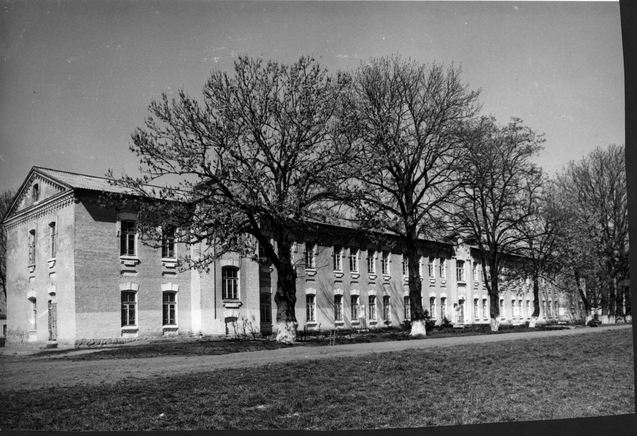
A house in a street in the Jewish ghetto. Photo from Yad Vashem
Berdichev was liberated by the Red Army on January 5, 1944.
Only 15 Jews survived Holocaust in Berdichev.
In 1990’s Iosef Finkelshtein created this small list of 178 drafted Berdichev Jews who were perished in Red Army
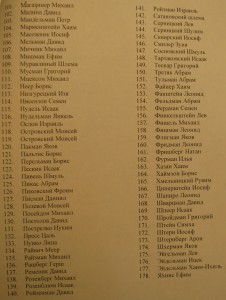 |
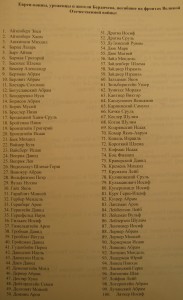 |
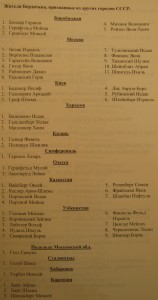 |
List of Berdichev Jews which were drafted from another places
- After the WWII
After the liberation of Berdichev, some Jews began to return from the evacuation and the synagogues were re-opened by Yakov Gorb in August 1944 (Lenina str, 40 and Marks str., 3).
One report states that there were about 6,000 Jews in Berdichev after the war (March 1946). Although Matzah baking was prohibited in the early 1960’s, it was resumed after a few years. In 1970, there were an estimated 15,000 Jews in Berdichev with a synagogue, a cantor, and a ritual poultry slaughterer. The cemetery was reported to be neglected but the Jews had erected a fence around the grave of Levi Isaac of Berdichev.
One synagogue is still functioning in Berdichev. The rabbi was a Chabad Hasidic representative S. Plotkin (until 2003), from the beginning of 2004 – Rabbi M. Toller. In the city there is a yeshiva and a kollel, which is headed by Rabbi A. Nemoi.
In 2015, Indiana University piblished materials of AHEYM Project on their website. There I find 14 small interviews in Yiddish which were taken in Berdichev in 2000’s.
Genealogy
Places
Old Jewish Cemetery with Ohel of rabbi Levi Yitzchok
The cemetery situated along Lenina street , directly behind the railway (see map in the beginning). It was established in the middle of 18th century but it wasn’t the first cemetery in Berdichev. The cemetery has not been used since 1973 and most of it now looks abandoned.
|
|
There is a monument to the Jewish victims of WWII. It was erected in 1953 near the airfield on one of the biggest Jewish mass graves of Berdichev. The memorial was funded by the local Jewish people. The fundraising was started by a Soviet Army colonel Spivak. However, the memorial survived for one day only, and was swiftly dismantled by the airfield staff. Colonel Spivak was sacked from his position in the Soviet Army and excluded from the Communist Party. In 1990 the memorial was found on the and later installed there. It was unveiled on 6 May 1990 with a new added inscription in Yiddish. The following members of the community took part in the restoration of the memorial: D.Y.Chris, Lev Tartakovsky, Mikola Gelber, Gennadіy Rapoport and others.
The Ohel of rabbi Levi Yitzchok is there.
Levi Yitzchok of Berditchev (1740–1809), also known as the Berdichever, was a Hasidic leader. He was the rabbi of Ryczywół, Żelechów, Pinsk and Berdychiv, for which he is best known. He was one of the main disciples of the Maggid of Mezritch, and his disciple Rabbi Shmelke of Nikolsburg, whom he succeeded as rabbi of Ryczywół. Reb Levi Yitzchok was known as the “defense attorney” for the Jewish people, because it was believed that he could intercede on their behalf before God. Known for his compassion for every Jew, he was therefore one of the most beloved leaders of Eastern European Jewry. He authored the Hasidic classic Kedushas Levi, which is a commentary on many Jewish religious books and laws, and is arranged according to the weekly Torah portion.
The Ohel was built in 1991 funded by an Israeli millionaire Nachman Elbaum and reconstructed in 2006. Inside the ohel there is Levi Yitzchok’s and his disciples’ graves.
Choral synagogue

Now it is a glove factory.
Built in 1850. It is a two-story brick building. It was one of the first Choral Synagogues in the Russian Empire. In 1924 there were 230 members in synagogue’s community but it was closed in 1929. In pre-war years the building housed the local atheists’ club. After the war only the walls remained standing but the Jews were allowed to use one room for religious services. In 1946 the building was presented to the Jewish community and over the next 20 years it was being slowly restored. But in 1964 the building was taken away again and became part of the glove-making factory and remains such now.
Address : Sverdlova str., 2
Zagrebalnaya Synagogue
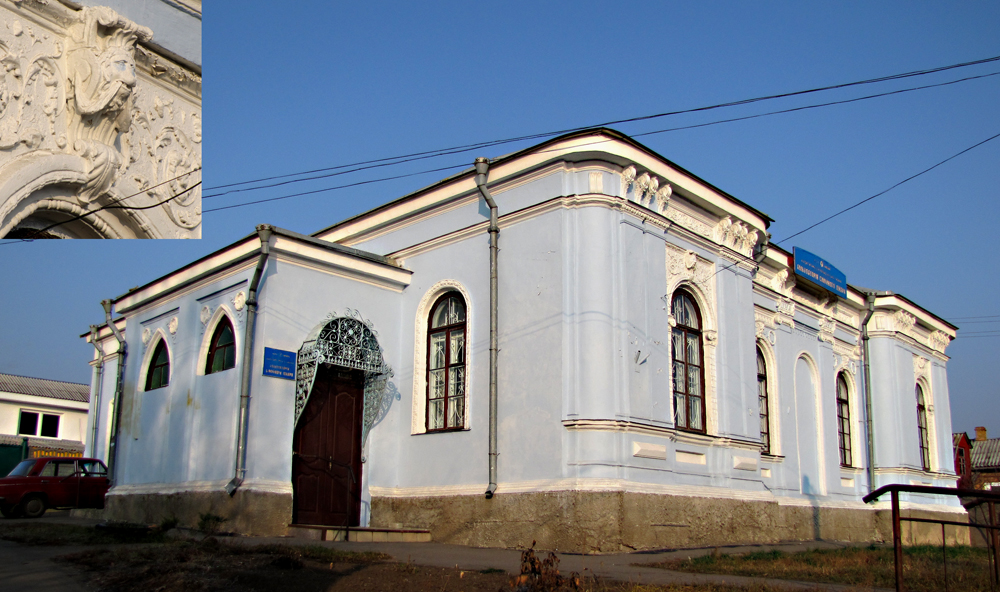
Zagrebalnaya Synagogue
Built in 1890 by a rich merchant called Magazinnikov. There are still his initials and date of building on the facade. In 1924 there were 200 members in synagogue’s community. It was closed in 1930th. After the war it became a cinema and an archive. Nowadays the building of a former synagogue on Zagrebelna houses a library.
Address : Voikova str., 22
Central synagogue
Now it is one of two working synagogues and a Jewish community center. It was never closed even during the Soviet period and shut only during Nazi occupation. After the WWII it was re-opened at the end of 1945 and was the third synagogue in Berdichev at that time.
|
|
According to the memories of Berdichev Jews, in the 1980s during high holidays the synagogue couldn’t contain all willing to pray and all neighboring streets were full of people. This was before mass aliya to Israel.
Address : Vorovskogo str., 3A
Synagogue Habad
Address : Chornovola str., 3
Phone: (04143) 2-02-35
E-mail: rabbi@berditchev.org
Head of Berdichev Habad: Moishe Taller

Habad Synagogue in Berdichev
Central park with grave of rabbi Liber
The Old Jewish cemetery with graves dating back to the 18 century was destroyed in 1920s. It is now a city park.
Rabbi Elnezer Liber “Great” was a religious head of Berdichev Jewish community in the middle of 18th century. He died during an epidemic in 1771. His grave stone was destroyed too the actual burial mound remained. Later a new gravestone made from reinforced concrete was erected.
|
|
An old legend survives about a Polish man who built a synagogue for Rabbi Liber as a sign of repentance and gratitude for saving his life. It was a famous old synagogue called “Alte Shil”. A group pious elderly Jews were burned alive by the Germans in this synagogue during the occupation. The synagogue was destroyed.
Ghetto during a war
By August 22, 1941, a ghetto had been established in Berdichev, in the Yatki area (between the river and the market) – it was the older Jewish part of the city. Mass executions started two weeks later.
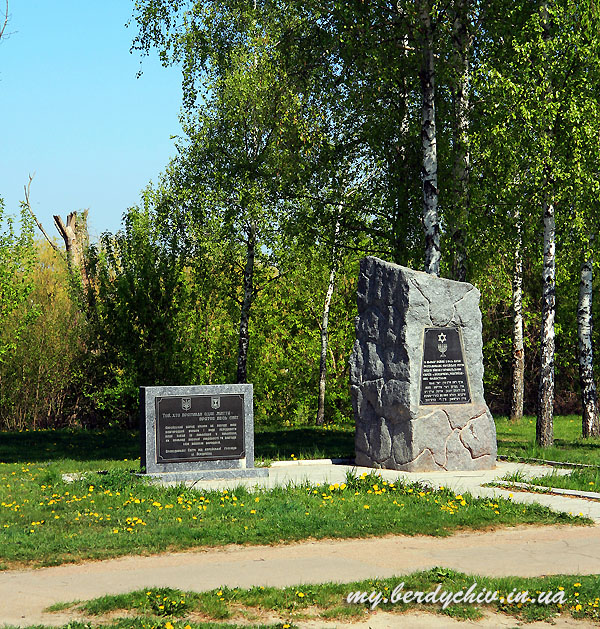
Monuments in tha place of former Jewish Ghetto during WWII. Photograph by my.berdichev.in.ua
A memorial to the Holocaust victims was opened on November 17, 1999. The idea behind the memorial belongs to Savely Y. Vekselshteyn – the head of the Jewish community of Berdichev.
On September 16, 2001 during the 60th anniversary of the mass killings of the Jews another memorial was installed to commemorate the Righteous Gentiles among nations. This was the first memorial to the Righteous Gentiles in Ukraine and other former Soviet bloc countries.
Holocaust mass graves
- 10 mass graves of victims 15-16 September 1941
On September 15, 1941, nearly 18,000 remaining Jews from the ghetto were rounded up by a special unit of the Higher SS and the Police Leader of the Southern Front Headquarters with Friedrich Jeckeln in charge, Police Reserve Battalion 45, and commandos of the Einsatzgruppe C, with the assistance of the Ukrainian police. 400 “specialists” were separated from the rest; the Germans moved the rest to the military airfield (known as Lysaya Gora), five kilometers away from Berdichev on the right side of the Raigorodok Road, between the hamlet of Shlemarka (known as Doichek’s hamlet) and the village of Radyanske. In ten mass graves, located in different places, 18,640 civilians were buried, mostly women, children and the elderly who were executed by the Nazis.
|
|
The graves vary in size. The largest one is located near the village of Lyubomyrky and is 50 × 30 m in size, the one near the brick factory is 15 × 15 m, the one near the village Mirnoe is 40 × 8 pm, the one near the military airfield is 10 × 8 m.
In 1983, on the right side of the road that leads from Berdichev to Raygorodok 10 m away from the road there is a pink granite memorial. It is a three meter vertical stele, which stands on a concrete slab.
In 1987, five other mass grave sites were marked with memorials. The inscription on all nine gravestones is a same: “In the memory of peaceful Soviet citizens who were tortured and executed by the Nazi invaders in September 1941.” In 1991 new granite plaques were fitted on them with the same inscription and a Star of David engraved on them. On June 25, 1995 a memorial plaque with a Star of David and dedication in both Ukrainian and Yiddish was installed on the mass grave near the airfield near Radyanske village.
In 2009 some graves were vandalized by the criminals looking for jewelry on the bodies. Here is a video made afterwards. here.
- The Historical-Cultural Reserve
July 1941, some 850 Jews and POWs were shot in the course of two days in the area of the Historical-Cultural Reserve. Also, in late July or the first days of August, nearly 300 Jews were shot by Sonderkommando 4a, later relieved by Einsatzkommando 5. On August 25 or 28, 1941, 546 Jews were shot in the area of the Historical-Cultural Reserve by a special unit of the Higher SS and Police Southern Front Headquarters, headed by Friedrich Jeckeln.
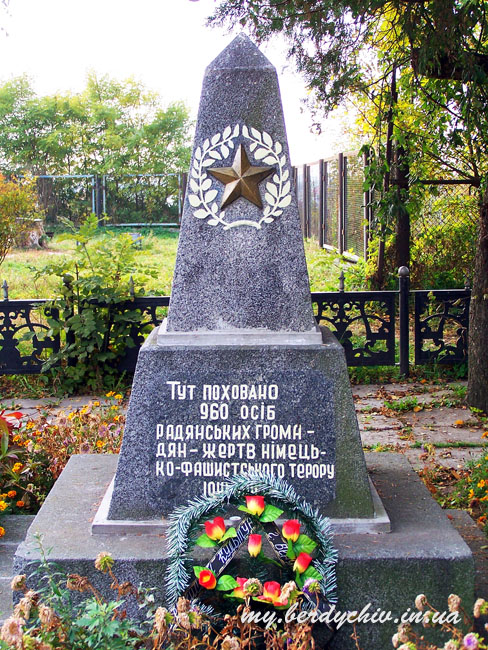
Monument on the grave in Historical-Cultural Reserve. Photograph by my.berdichev.in.ua
After Berdichev the liberation commission conducted excavations and discovered a mass grave in the State Historical and Cultural Reserve. 960 human corpses were identified, mostly men dressed in civilian clothes and some in military uniforms. All corpses had traces of gunshot wounds to the back of the head. In 1944 six-foot obelisk of gray granite was erected with a memorial inscription which read: “Here 960 Soviet citizens are buried, the victims of German Nazi terror of 1941-1943”
- Khazhin
On August 27, 1941 (according to another source, September 4), a special unit of the Higher SS and Police Southern Front Headquarters headed by Friedrich Jeckeln assembled 1,303 (according to another source, 2,000) young strong Jews, mainly men, supposedly to send them for agricultural labor. They were held in the warehouses of the town’s market until the required number of men was assembled. On September 4 (according to another source, September 5), the men were brought to the area between the villages of Khazhin and Bystrik, some three to four kilometers south of Berdichev on the road to Vinnitsa, and shot. This place was also used for further mass killings.
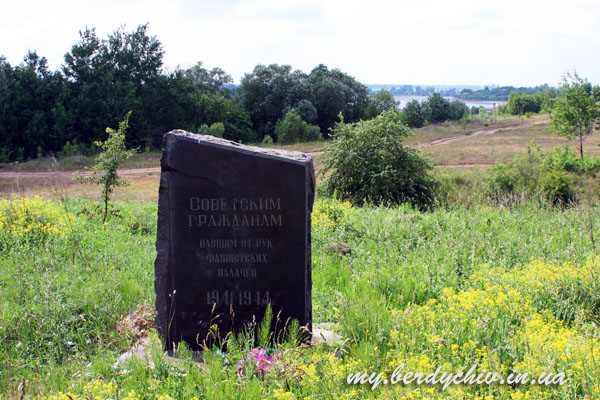
Monument on the mass grave near Khazin village. Photograph by my.berdichev.in.ua
On April 1, 1944 the Special Soviet Commission found 24 graves and identified 10,656 human corpses, dressed in civilian clothes. In one of the graves on top of the rest of the bodies the remains of young women with mouths tightly wrapped were found, presumably raped before death. In 1944 the remains of the dead were reburied in two large graves. A memorial was erected in 1983.
- Sokulino
At the end of October 1941, up to 2,000 Jews who had managed to hide during the murder operation of September 15 in the rural areas around Berdichev , and the local craftsmen were corralled by the Germans in the monastery of the Discalced [Barefooted] Carmelites (present day nature reserve). On November 3 (according to another source, October 29-30), all of them, except for the 150 best craftsmen, were delivered by truck to the area of the Sokulino sovkhoz, to a ditch not far from the forest. With the assistance of the local Ukrainian policemen, the Germans ordered them to undress, and then shot them.
- Lisays Gora
In 1912 a two-story brick house with 42 rooms was built here. It belonged to a military unit before the war.
In early November 1941 the last 150 Jews from the ghetto in the city were deported there. They were the best specialists, artisans, which were forced to work 12 hours per day on different assignments. In February 1942 all Jewish craftsmen who were still alive in the city had to move to the ghetto on Lisaya Gora. However, in May and June 1942 around the town in the towns and villages the raids and killings of Jews who were still alive continued. Around 700 young men from Yanushpol (Ivanopil), Andrushivka, Koziatyn and Ruzhín were forcibly driven in the ghetto on Lisaya Gora. 230 Jewish craftsmen were shot by the former 14th Cavalry Regiment on 16 July 1942. Executions were carried out daily and pits were dug by the victims. Several dozen (some 60 people, the best specialists) survived until later when they were transferred to the prison to be killed and burned.
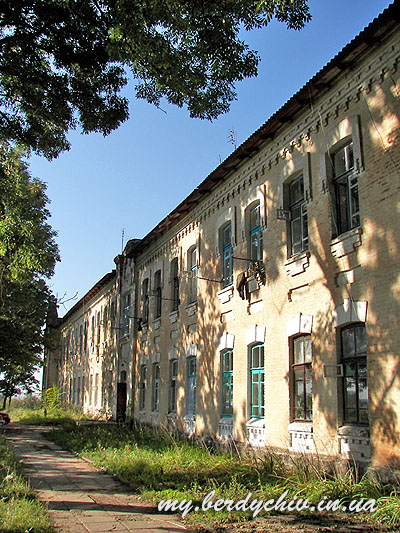
Building where ghetto was existing. Photograph by my.berdichev.in.ua
At the beginning of 1942 seventy Jewish orphans from the Dimitrov children’s home were baptized and shot the following day.
In April 1942 all Jewish women who had been married to Russian men and all children born of mixed marriages were killed. The last hundred Jews from the ghetto were shot in November 1943, when the Red Army liberated Zhytomyr for the first time.
